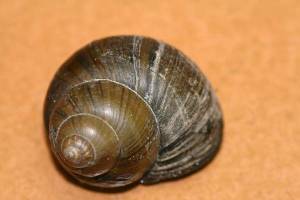Classification
Cipangopaludina chinensis
 Latin:
Latin:
pango - fasten, fix, drive in
paludi -
swamp, marsh
chinensis - reference to China
Domain - Eukarya
The following information was obtained from
the text Animal Diversity. This organism is classified in the
domain Eukarya because it is made up of cells which contain
membrane bound organelles and a membrane bound nucleus.
Kingdom - Animalia
This snail is placed in the kingdom Animalia
because it is multi-cellular and heterotrophic, which means that
it cannot make its own food.
Phylum - Mollusca
This organism is a soft-bodied (no internal
skeleton) coelomate (body cavity lined with peritoneum) with a
calcium carbonate shell. These characteristics place it in the
phylum Mollusca.
Class – Gastropoda
Cipangopaludina chinensis is a
gastropod because of a twisting of its body that occurs during
development referred to as torsion. This event results in the
opening for the anus positioned above the head.
Subclass – Prosobranchia
Members of the subclass Prosobranchia all have
gills and a hard plate called an operculum which seals the
entrance to their shells when they withdraw inside (Hickman,
2009).
Order - Architaenioglossa
Family - Viviparidae
This organism is ovoviviparous (see
Reproduction) which places it in the family Viviparidae (USGS,
2009).
Genus – Cipangopaludina
This organism was classified at two different
points, once into the genus Cipangopaludina and again
into the genus Bellamya. Cipangopaludina was
the earliest classification and will be used throughout this
website.
Species – Cipangopaludina chinensis
Past classification - Bellamya chinensis /
Cipangopaludina chinensis malleatus / Bellamya chinensis
malleatus / Viviparus chinensis malleatus (USGS, 2009)
The above classification was obtained from Nature Serve (2011).
To see where C. chinensis lives check out habitat.
Go Home